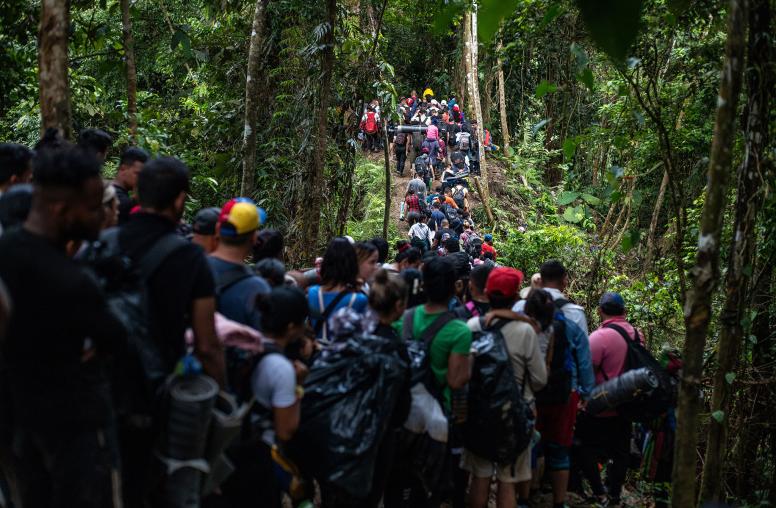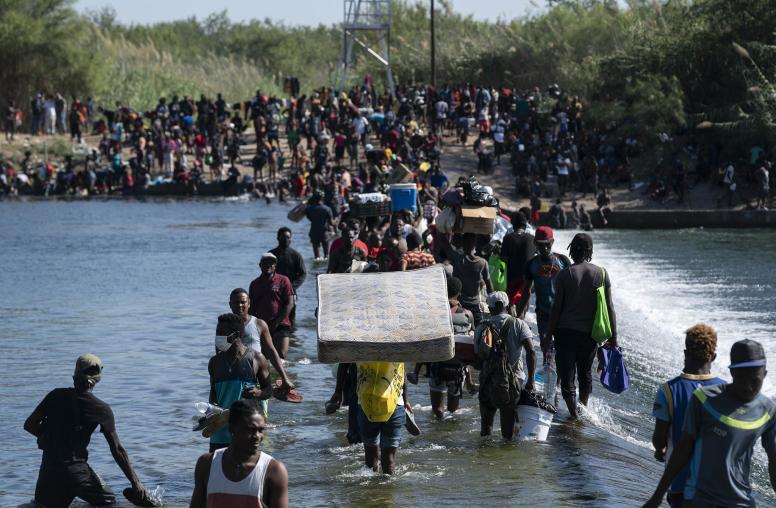Like most Americans, I know exactly where I was on 9/11: in a meeting just blocks away from the White House, where I was slipped a note that didn’t make any sense. We continued the meeting until the second note confirmed we were facing an enormous tragedy that no one understood at the time. For weeks there was mourning, as well as confusion and misunderstanding about what had happened and who was responsible. Today, many millions of us will be reflecting on this somber anniversary and the difficult ground we have traveled since. It’s worth taking stock of where we are now—and more importantly, where we are headed. We have learned many hard lessons based on experience and research in the last 18 years, and the question is whether we are ready to act on those lessons by moving beyond reacting to violent extremism and instead investing in prevention.

As co-chairs of the bipartisan 9/11 Commission, Governor Thomas Kean and Congressman Lee Hamilton detailed in the Commission’s ground-breaking 2004 report key recommendations on how to keep the homeland safe from future attacks. Critical recommendations from that report were implemented, which have helped ensure we have not experienced further attacks at home. But the two seasoned lawmakers have long lamented that one important recommendation was sidelined: the imperative of developing a prevention agenda to stop the proliferation of violent extremism around the world. And indeed, since 9/11, the number of terrorist attacks has increased fivefold, with extremism spreading to 19 out of 45 states in the most fragile areas in the Sahel and Horn of Africa, and the Middle East with the rise of al-Qaida, ISIS, al-Shabab and Boko Haram, as well as dozens of affiliates.
Fortunately, there is currently heartening momentum toward a U.S. government prevention strategy, based on almost two decades of research and difficult lessons learned. Even as national security priorities are shifting, now is the time to lean into application of years of lessons. We cannot risk a shift in focus while violent extremism continues to boil over in the most fragile areas. Now is the time to keep our eyes on the ball.
A Prevention Moment
Last year, Congress asked USIP to develop a comprehensive plan to address the underlying causes of extremism in the world’s most fragile states, where the social compact between a people and their government is deeply frayed and broken. We convened a high-level Task Force on Extremism in Fragile States, which charted a course forward with three main recommendations: 1) develop a shared understanding across the U.S. government of the conditions that allow extremism to thrive; 2) better align defense, diplomacy, and development efforts; and 3) share the burden by working with international partners.
Key elements of those recommendations are mirrored in the Global Fragility Act, important legislation that has passed in the U.S. House and is currently pending in the Senate, with a strong bipartisan slate of supporters. At the same time, a consensus around the problems of fragility and the importance of prevention is building throughout the international community, with the World Bank developing a new fragility strategy to guide its efforts in a greatly expanded fragility portfolio. The United Kingdom has also recently released a stabilization strategy aimed at reducing violence in fragile, conflict-affected countries.
After nearly 20 years, we know from deep and painful experience that we cannot bomb our way out of this problem. Instead, we know that while every context is different, all too often repressive security forces, governments that marginalize large swaths of their populations, corruption, and the resulting hopelessness are all powerful contributors to the ability of violent extremists to recruit young people to their ranks. By providing more reliable services and creating a sense of inclusion and cause, they can out-perform corrupt and illegitimate governments.
These are tough problems, and to make progress, we need to marshal our considerable capabilities across the U.S. government—defense, development, and diplomacy—to focus on a shared understanding of the problem, and to do so in partnership with reformers within fragile countries and with the international community. This a long and iterative process, but vitally important to get ahead of the growing violence that emanates from the most fragile states.
The Risk of Losing Momentum
As the national security focus in Washington pivots—with good reason—to a rising China, a more aggressive Russia, and the threats emanating from North Korea and Iran, we must ensure we don’t risk losing the momentum that is now propelling the emergence of a new prevention strategy. While the world is understandably eager to move on from seemingly never-ending conflicts, fragile states continue to provide fertile ground for extremism to take root and grow.
Rising inter-state competition certainly demands our attention. Not only does it pose considerable new threats, it also is increasingly exacerbating and prolonging conflicts in fragile states. In today’s hotspots, from Syria to Libya, to eastern Ukraine and the Red Sea, regional and global rivals provide arms, assistance, and support to numerous state and non-state actors, making these regions more fragile and more susceptible to extremist violence and conflicts more intractable and difficult to solve.
In today’s complex global landscape, we cannot afford to choose between an effective prevention strategy or addressing rising inter-state competition. We must do both. As our grandmothers told us: an ounce of prevention is worth a pound of cure, especially when the current prescription comes in the form of trillions of dollars and the continued loss of life. Even as we pivot to address new threats, we must maintain the momentum toward more effective prevention strategies.
Peace—and prevention—is possible, but it takes action. It takes all of us.

